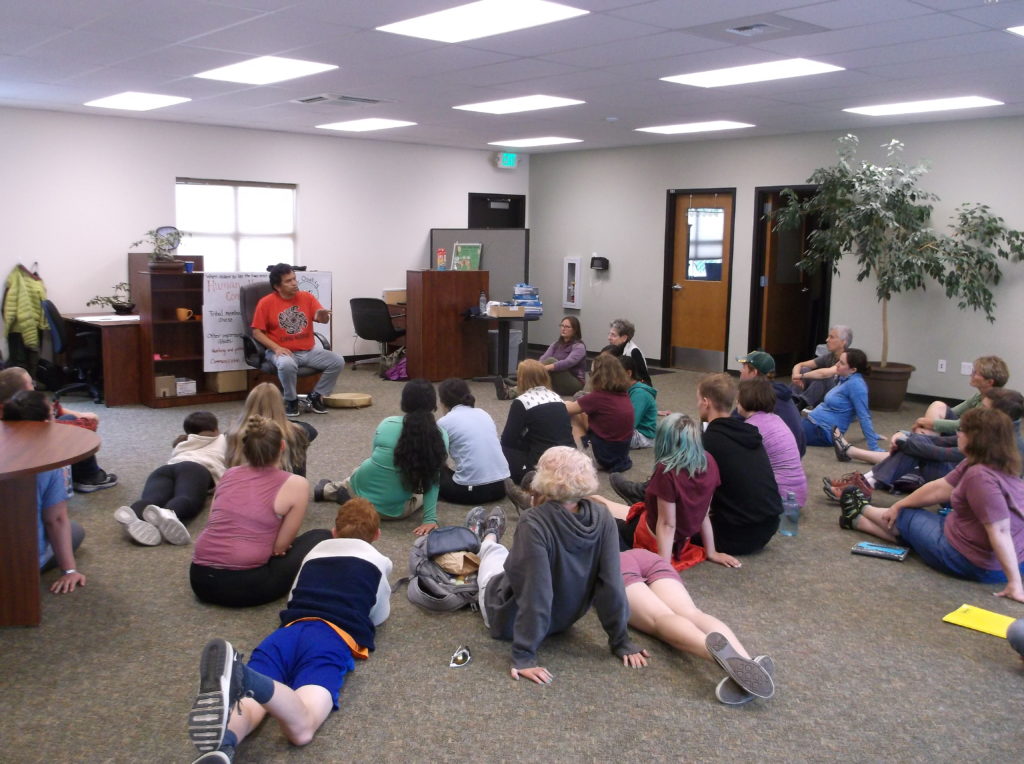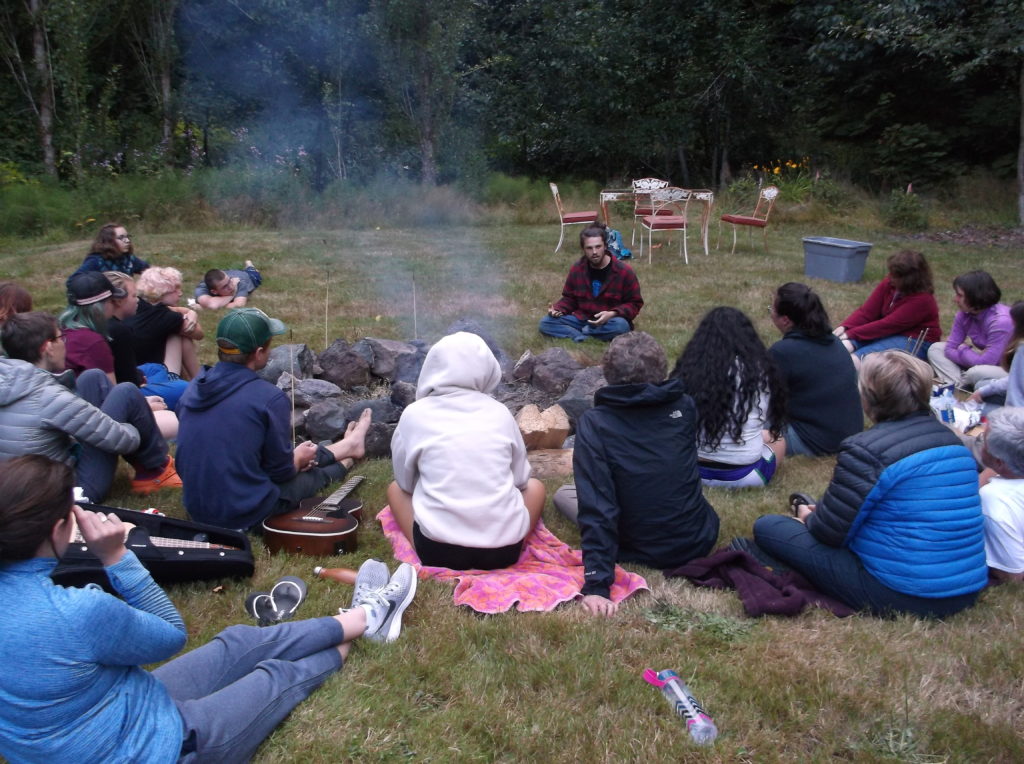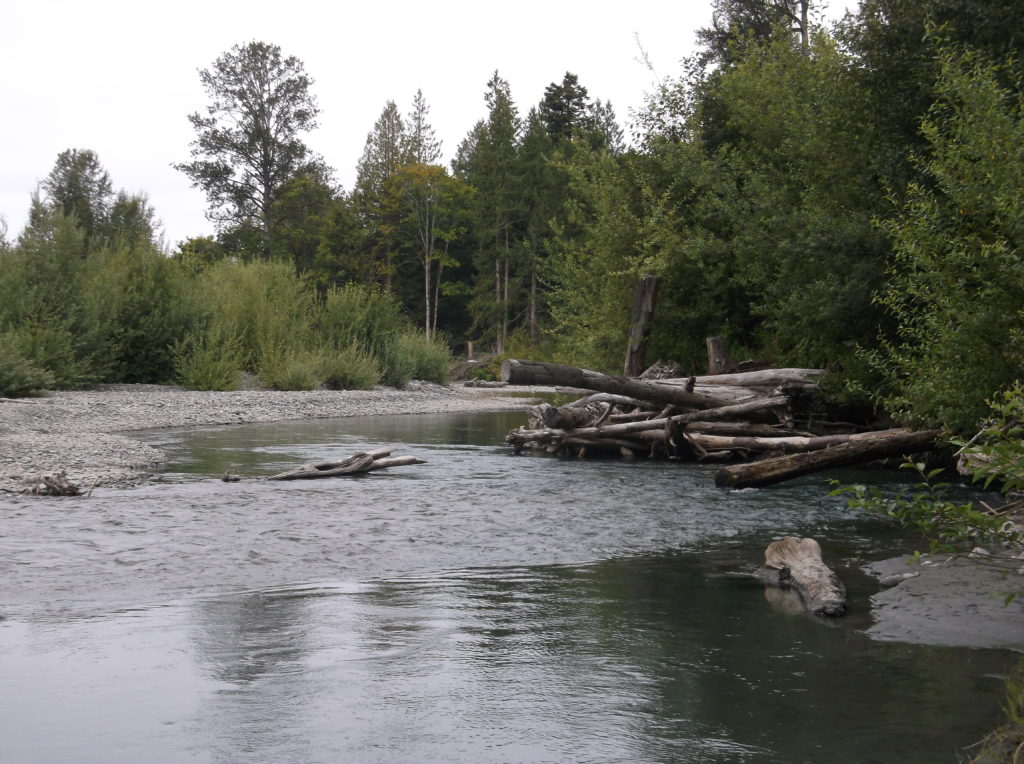
This morning we visited the Lower Elwha Natural Resources facility where we met Roger Fernandes, an educator and a member of the Lower Elwha band of Klallam Indians. He made a point to teach us through the traditional, ancient powers of storytelling. His stories captivated all of us, and discussions of depth and thoughtful underlying messages within the story entailed. We learned more about the traditions and history of the Klallam tribe and their relationships with the land and the river. Salmon remain extremely vital to the river and forest ecosystem here, as well as to the tribe in lifestyle and sustenance. In order to truly experience the Elwha River, salmon, and ecosystem, we continued our learning outside with Rebecca Paradis.
Arden Johnson

We hopped in the vans for a quick jaunt to the mouth of the Elwha River. Most of this beach didn’t exist six years ago. When the dams came out in 2013, decades of backed up sediment flowed down the and replenished the eroded shoreline with eighty acres of new land. This was—and still is—the largest dam removal in the world.

Rebecca and her team showed us satellite photos from the past few years and pointed out where the river had snaked and extended post-dam. They showed us both the native and invasive species that had moved in, and we helped remove a few growths of scotchbroom, reed canary, white-topped clover, and other invasive plants while we walked. A few pilgrims spotted an abandoned crab trap that had floated up on the sand, which they hauled off the beach and back to our vans.
Today we went to a salmon hatchery and we went to the mouth of the Elwha River. The salmon hatchery was connected to the Elwha by a stream, and in the clay of the stream were otter footprints (or perhaps they belonged to a raccoon). There were also deer footprints in the clay, along with medium-sized bird footprints. Perhaps they belonged to a crow?
At the Elwha delta, I decided to wander away from the ocean’s edge and walk along the pools of the estuary. There, I found large webbed bird footprints, smaller non-webbed bird footprints, coyote footprints, and deer footprints. I think the larger bird footprints belonged to seagulls and the smaller ones belonged to a Great Blue Heron.
Elena Burnett

Tonight, we’re camping under the stars on a former nine-hole golf course since transformed. Gordon Hempton, internationally acclaimed acoustic ecologist, bought the property and crafted the space into something sacred. We explored this land, ate a locally sourced salmon dinner, and sang and laughed around a campfire. We also heard from the property’s caretaker (PhD student Tuck Tyrell) about his research recording and analyzing forest communications—a topic several of our pilgrims had already read about on their own time, even before learning about tonight’s opportunity.

The golf course feels like a woody oasis where time stands still. Friends (new and old) throwing a frisbee, jumping in a frigid creek, and playing soft melodies on guitars. It’s the feeling of a cozy cabin, it’s just deconstructed. The comforts of home, just not confined to timbered walls.
Ava Reymond
A few more photos from Arden Johnson:






“The comforts of home, just not confined to timbered walks.” Gorgeous description of natural surroundings as community deepens.
As your pilgrimage nears its end, I celebrate all you have seen and heard, tasted, smelled and touched — and all the ways you have been touched by the Holy. Thanks, Josh, for helping us share the journey. You all remain in my prayers.